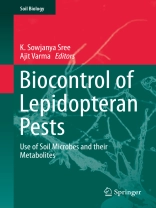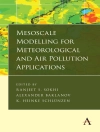This volume describes the various applications of entomopathogenic soil microorganisms in the management and control of the devastating lepidopteran pest. An introduction describes the insecticidal properties of viruses, bacteria, fungi, nematodes and their metabolites, as well as their applications in the context of crop improvement. Subsequent chapters focus on topics such as insecticidal proteins; the role of nucleopolyhedroviruses; Bt toxins and their receptors; control of lepidopterans using entomopathogenic fungi; management of cotton defoliators; and sustainable use of entomopathogenic nematodes and their bacterial symbionts. An overview of culture collections of entomopathogenic microorganisms rounds out the volume.
Daftar Isi
An Introduction to Entomopathogenic Microorganisms.- Role of Nucleopolyhedroviruses (NPVs) in the Management of Lepidopteran Pests in Asia.- Bt Insecticidal Crystal Proteins: Role in Insect Management and Crop Improvement.- Identification and Characterization of Receptors for Insecticidal Toxins from Bacillus thuringiensis.- Non-Bt Soil Microbe Derived Insecticidal Proteins.- The Management of Spodopteran Pests Using Fungal Pathogens.- Comparative Account of Generalist and Specialist Species of the Entomopathogenic Fungus, Metarhizium.- Non-ribosomal Peptides from Entomogenous Fungi.- Optimization of the Cyclodepsipeptidic Destruxin Recovery from Broth Culture of Metarhizium anisopliae and its Augmentation by Precursor Supplementation.- Beauveria bassiana: Biocontrol Beyond Lepidopteran Pests.- Biocontrol of Diamond Back Moth, Plutella xylostella with Beauveria bassiana and its Metabolites.- Entomopathogens for Cotton Defoliators Management.- Entomopathogenic Nematodes and their Bacterial Symbionts as Lethal Bioagents of Lepidopteran Pests.- The Management of Helicoverpa species by Entomopathogenic Nematodes.- Sustainability of Entomopathogenic Nematodes Against Crop Pests.- An Overview of Some Culture Collections of Entomopathogenic Microorganisms in the World.












